Lure birds to your backyard like a "BirdNote" pro
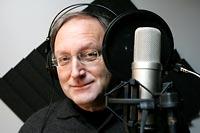
When it comes to backyard birdwatching, experts wrestle with the same challenges as the rest of us, including neighborhood cats, seed-stealing squirrels and aggressive starlings.
But they still have an edge on the details.
Birders know the tricks: how to attract more species, when to expect them — and, when they arrive, how to identify them. To find out more about attracting birds to an urban yard, digs turned to two experts who share birding advice on a local radio show.
Bob Sundstrom and Dennis Paulson are two of the minds — and writers — behind Seattle Audubon's "BirdNote" series, which airs on KPLU-FM. They are also part of the show's advisory board.
On "BirdNote," which airs for two minutes at 8:58 a.m. weekdays, listeners — many of them commuters — learn how hummingbirds survive the winter, the call of a loon, how to compare chickadee calls and more. Here, Paulson and Sundstrom share their techniques for drawing birds into their yards:
A "bit of nature therapy"
Paulson, the author of several birding books and former director of the University of Puget Sound's natural history museum, has several feeders visible from his Seattle home office.
On a recent wintry day, varied thrushes mingled with dark-eyed juncos, and Steller's jays and black-capped chickadees alit in the yard.
"I can see birds coming to the suet cage, and just [last] month, especially when it was so cold, there were two Townsend's warblers and two ruby-crowned kinglets, which we don't always see at the feeders," he said. "It was just a constant show."
Paulson hangs seed, suet and nectar feeders, and he scatters seed to draw multiple species. He puts peanuts on his window ledge for Steller's jays, and a pond with a bubbling fountain brings in migratory birds.
Paulson and his wife, Netta Smith, chose a home near a ravine for its habitat variety and scenic views. He keeps track of birds, including arrival and departure dates of migratory species, and has seen 112 species over 15 years.
"Having the yard is extremely good for me," he said. "It's a little bit of nature therapy."
Bird-smart landscaping
Sundstrom, who leads international birding tours with Victor Emanuel Nature Tours and is a birding-by-ear expert (he can identify a bird by its call), lives on a rural patch of land east of Tenino, Thurston County. He and his wife, Sally Alhadeff, added plants to natural shrub lines to allow birds to sneak into new areas, and installed native plants, perennials and pathways through the garden.
Sundstrom said he regularly sees birds like the northern pygmy owl and the western scrub jay, which are more difficult to spot in the city. Sundstrom estimates he's seen or heard about 125 species over five years.
But even in rural areas, he said, feeders are essential to bringing birds to your yard. He likes starling-proof feeders, and suggests nectar ones for urban dwellers interested in luring Anna's hummingbird.
At his home, he tosses about a quart of mixed seed on gravelly ground every morning.
"There are a number of birds much happier feeding on the ground," he said.
Smart landscaping will bring in even more — fruiting shrubs attract migratory songbirds. Birds also need water, and a variety of shallow birdbaths may result in a cacophony of chirping birds.
If you put out feeders, you'll also see predators, like the sharp-shinned hawk and the merlin falcon. That is normal, Sundstrom said.
"They are taking birds," he said. "It's just what they eat. You're not making it easier for them by having a feeder."
This winter has been excellent for birdwatching. Snow brings out birds you wouldn't see otherwise, including one of Sundstrom's favorites, the varied thrush.
"People are always dazzled by varied thrush coming in," he said. "There's something about these birds that are relatively shy. It's a very special opportunity when you see them out for any length of time."
Nicole Tsong: 206-464-2150 or ntsong@seattletimes.com
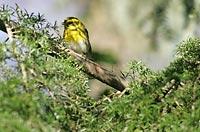

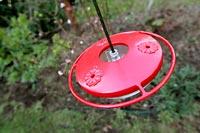
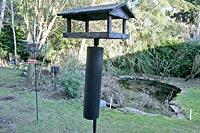
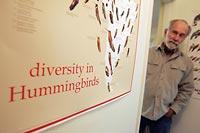
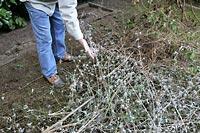
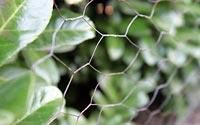
Catch the show
![]()
![]()
"BirdNote" airs at 8:58 a.m. Monday-Friday on KPLU-FM 88.5. For more info, see www.birdnote.org.
Set out the welcome signs
![]()
![]()
Here are some tips on creating a bird haven:
Feeders: Put out a variety. Seed feeders with a mix of milo, millet and black-oil sunflower seeds attract sparrows, juncos and towhees, while a suet feeder draws woodpeckers, Bushtits and nuthatches. Hummingbirds feed on sugar water (4 parts water to 1 part sugar, boiled) in nectar feeders. Clean feeders at least once a week, and rake up fallen seeds.
Scattered seed: Some birds prefer to feed on the ground. Dedicated birders scatter seed daily.
Plants: Birds dislike open lawns. Plant a mix of shrubs and trees in your yard, including fruit shrubs like mountain ash and elderberry species.
Moving water: Provide birdbaths at a variety of heights with water no more than 1 inch deep. Moving water in a fountain will draw migratory species in late summer and fall.
Predators: Make sure feeders and baths are high enough off the ground so cats can't pounce. Wrap shrubs in chicken wire to eliminate hiding areas. (The plant will grow through the wire.)
For more information on creating a backyard wildlife habitat, see the tips provided by the Washington Department of Fish and Wildlife at wdfw.wa.gov/wlm/backyard/landscape.htm.
Source: Bob Sundstrom, Dennis Paulson, BirdNote.org
Count 'em
![]()
![]()
This year's Great Backyard Bird Count, sponsored by the Cornell Lab of Ornithology and National Audubon Society, is Feb. 16-19. For details, go to www.birdsource.org.